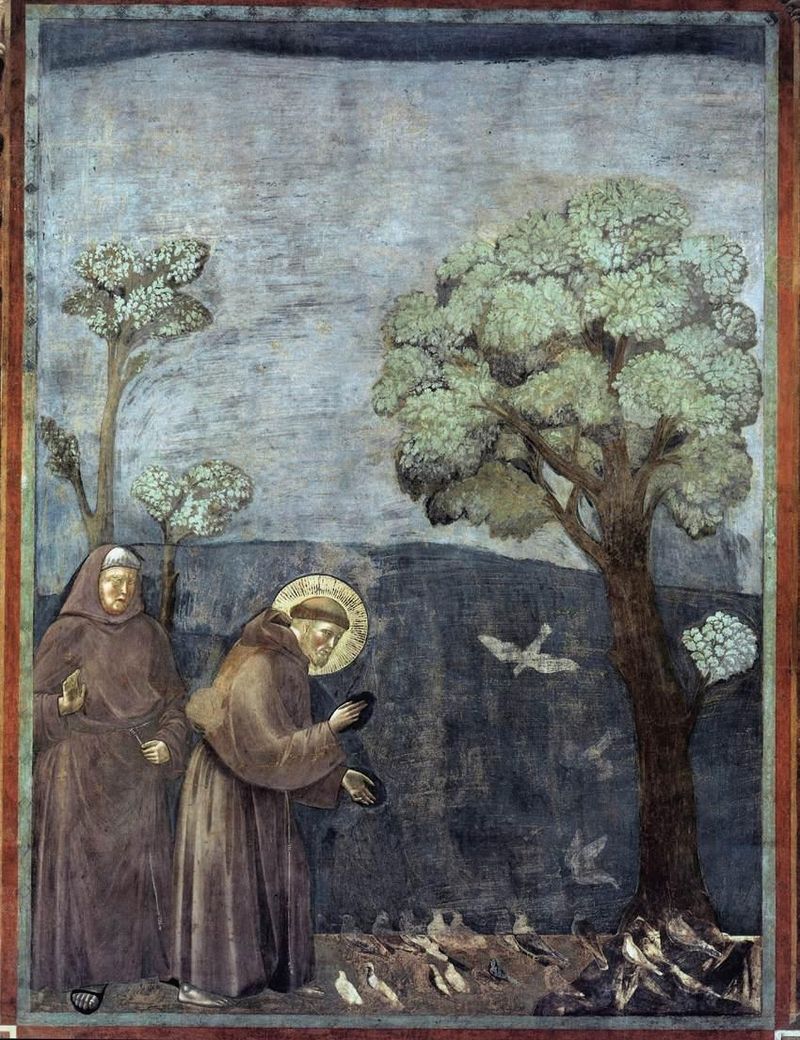Richard Wilson, The Temple of Clitumnus,
with the cows drinking from the spring of Clitumnus,
near Spoleto, Umbria (detail), 18th century
Source: Christies
I have been re-reading Gilbert Highet, whose Poets in a Landscape (1957) I wrote about in an earlier post about the Springs of Clitumnus. Highet was drawn to this place through 'two lines of sincere poetry' in an elegy by Sextus Propertius (c. 50/45-15 BCE):
The rest of this poem, and almost everything else Propertius wrote, is about love and his life in the city of Rome. However, you can find more landscape in his poetry, in this description of his origins.among the woods where the Clitumnus hides its lovely
springs, and white oxen bathe in the cool stream
Mevania is modern Bevagna and the lake was nearby although it was drained long ago and no longer exists. Asisum is Assisi and there are still Roman stones there bearing the Propertius family name. But, as Highet explains,Old Umbria bore you on a famous family-tree,
I do not lie; the borders of your home
are these: cloudy Mevania, among rain-soaked fields,
the Umbrian lake, smiling in summer heat,
and steep Asisium's wall climbing towards the peak -
the wall to which your genius has brought fame.
'In Assisi today, everything belongs to the world of St. Francis. Apart from a few inscriptions and details, there is only a small and elegant Capitoline temple (dedicated to the trinity of Jupiter, Juno, and Minerva) above ground to remind the visitor of the world of Propertius, and, below ground, the relics of the Roman Forum. High above them soar the immense walls and towers of the churches of St. Francis. ... Around the towers of the church of St. Francis, the doves which once were the messengers of Venus now rise, the emanations of a loftier and purer spirit.'
Giotto (attribution uncertain), St. Francis Preaching to the Birds, 1297-99
Source: Wikimedia Commons
Francesco Bernadone - St. Francis - is much more associated with nature than Propertius, through the stories that he preached to the birds and made peace between a wolf and a village. He is included, albeit 'stretching the point', in Italian Landscape Poems, the 1993 anthology compiled and translated by Alistair Elliot, who sadly died late last year. The book starts with St. Francis' Canticle of the Sun or Laudes Creaturarum ('Praise of the Creatures'), which is said to have been composed in 1224. It is in the Umbrian dialect of Italian, rather than the Latin written by Propertius, and is often considered the earliest work of Italian literature. Here are some lines in praise of the elements: the wind, air and clouds, water ('so helpful and humble, precious and chaste'), fire and finally earth, 'who nourishes and guides us / and brings forth fruit in kinds, with coloured flowers, and grass.'
Laudato si, mi Signore, per frate Vento
et per aere et nubilo et sereno et onne tempo,
per lo quale, a le Tue creature dài sustentamento.
Laudato si, mi Signore, per sor'Acqua,
la quale è multo utile et humile et pretiosa et casta.
Laudato si, mi Signore, per frate Focu,
per lo quale ennallumini la nocte:
ed ello è bello et iucundo et robustoso et forte.
Laudato si, mi Signore, per sora nostra matre Terra,
la quale ne sustenta et gouerna,
et produce diuersi fructi con coloriti fior et herba.


1 comment:
Landscape in poetry is difficult to describe, but its impact on readers can be very wide and long lasting. Landscape in art is easily to create, but few people will view the finished object and it may not last for ever.
Post a Comment